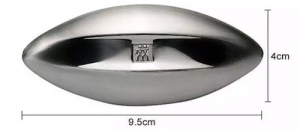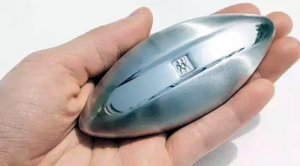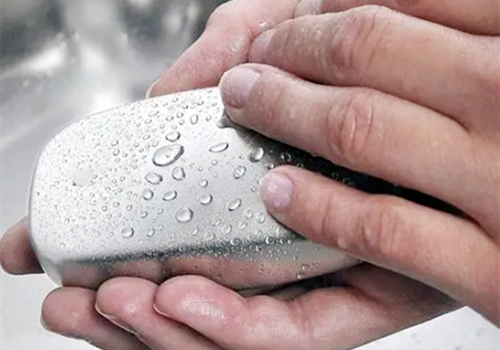It is understood that the invention of stainless steel soap is accidentally discovered by steel engineers, their hands stained with the smell of heavy oil in the stainless steel alloy parts grip together, which can effectively remove the smell of the hand. Tests have shown that several stainless steel soaps rated “good” when scrubbed in cold water for 30 seconds are effective in removing hand odors. In fact, stainless steel soap is not like our ordinary soap as antibacterial or bacteriostatic, its main role is in addition to taste. Think it’s amazing? How does it work, since it has not been proven or only partially so far? There are two main theories:
 The first is the principle of oxidation. Because stainless steel soap is composed of Fe-Cr alloy, the two metals are easy to produce oxidation reaction to form oxides after contact with odor molecules, and then the oxides are taken away by flowing water, so as to achieve the effect of flavor removal. But German government agencies have of a company’s stainless steel soap patent product testing, they thought the bad smell molecule contains a small amount of sulfur and ammonia compounds, then in the process of handwashing, the stainless steel material of the stainless steel soap ACTS as a catalyst, the odor molecules into oxide to wash away with water. Neither view has been fully proved.
The first is the principle of oxidation. Because stainless steel soap is composed of Fe-Cr alloy, the two metals are easy to produce oxidation reaction to form oxides after contact with odor molecules, and then the oxides are taken away by flowing water, so as to achieve the effect of flavor removal. But German government agencies have of a company’s stainless steel soap patent product testing, they thought the bad smell molecule contains a small amount of sulfur and ammonia compounds, then in the process of handwashing, the stainless steel material of the stainless steel soap ACTS as a catalyst, the odor molecules into oxide to wash away with water. Neither view has been fully proved.
 The second principle is to destroy the tension of the odor molecules. This view that stainless steel soap itself on the removal of an odor is no effect, just because of the constant friction and hand, destroy the tension between the skin surface odor molecules, so that it is easy to be taken away by the flow of water in the process of hand washing, so as to eliminate the odor. When stainless steel alloy and air and water molecules at the same time contact will produce a catalyst, decomposition of the odor of the molecular structure reduction into tasteless. In particular, the stainless steel surface by special grinding of the frosted surface and object friction, the release of iron ions with odor molecules combined to achieve the effect of removing flavor, usually to “half into the water, half exposed to the air”.
The second principle is to destroy the tension of the odor molecules. This view that stainless steel soap itself on the removal of an odor is no effect, just because of the constant friction and hand, destroy the tension between the skin surface odor molecules, so that it is easy to be taken away by the flow of water in the process of hand washing, so as to eliminate the odor. When stainless steel alloy and air and water molecules at the same time contact will produce a catalyst, decomposition of the odor of the molecular structure reduction into tasteless. In particular, the stainless steel surface by special grinding of the frosted surface and object friction, the release of iron ions with odor molecules combined to achieve the effect of removing flavor, usually to “half into the water, half exposed to the air”.
The question is, what material is stainless steel soap made of? Will it not rust? How long will it last? What’s the appearance? Can it contact food? In fact, stainless steel soaps are manufactured from food grade 304L stainless steel, with a surface brushed polishing process, can direct contact with food materials. For the first time, it needs 5-6 hours to wait for normal work, and the effective use time can be maintained for 3 to 5 years.







